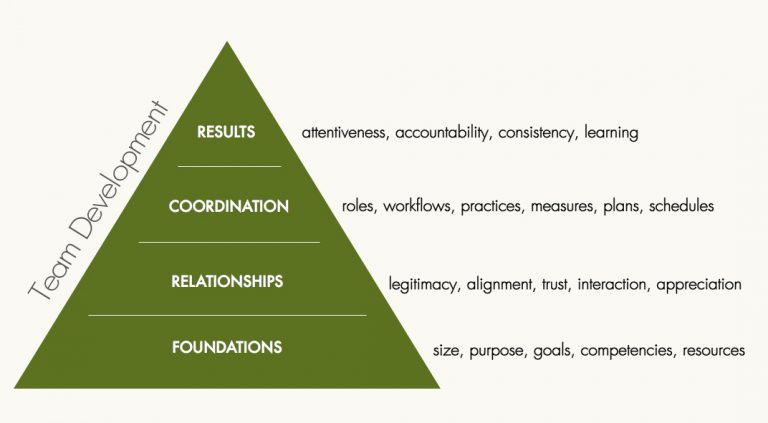VANRY team development practices flow from our central distinctions for relationships and coordination. The concept of workflow is central to everything that teams do. The effectiveness of team workflows depends significantly on the strength of team relationships and on the basic skills and practices of team members.
Teams are a special case for ‘coordinating action.’ High performance team characteristics, relationships and practices are often higher quality. While not every team has to be ultra-high performing, using the standards of high performing teams as a benchmark can help a team self-assess what relationships and coordination optimizes their team performance.
Team Development Model
Our model is comprised of top performing ‘shared standards’ that teams can use to assess their current and ideal characteristics.
Our preferred approach in working with a team is to listen and observe directly how a team works, diagnose issues and opportunities, and work with the team and individuals to resolve barriers and introduce new helpful practices and competencies in the areas of relationships, coordination and leadership.

Foundations
A team with strong foundations has a manageable size, a clear compelling shared purpose, quantifiable goals, competencies and resources sufficient to their challenge.
Relationships
Strong teams create and maintain strong relationships, establish and protect legitimacy, maintain alignment, trust, effective interaction and appreciation.
Coordination
Coordination on strong teams leaves little to chance. Roles are clear and workflows are reliable. Practices for collaborating effectively follow a repeatable pattern. Plans and schedules are used regularly and they reflect reality.
Results
Results hold a special status on strong teams. They are closely attended to not out of fear or guilt, but as shared commitment. Team members feel accountable for their contributions and responsible to ensure that others are successful. This attentiveness is partially for celebration and success but also significantly for learning. Results fuel continual innovation and improvement. Time is spent in regular review and reinvested in upcoming team challenges and commitments.
